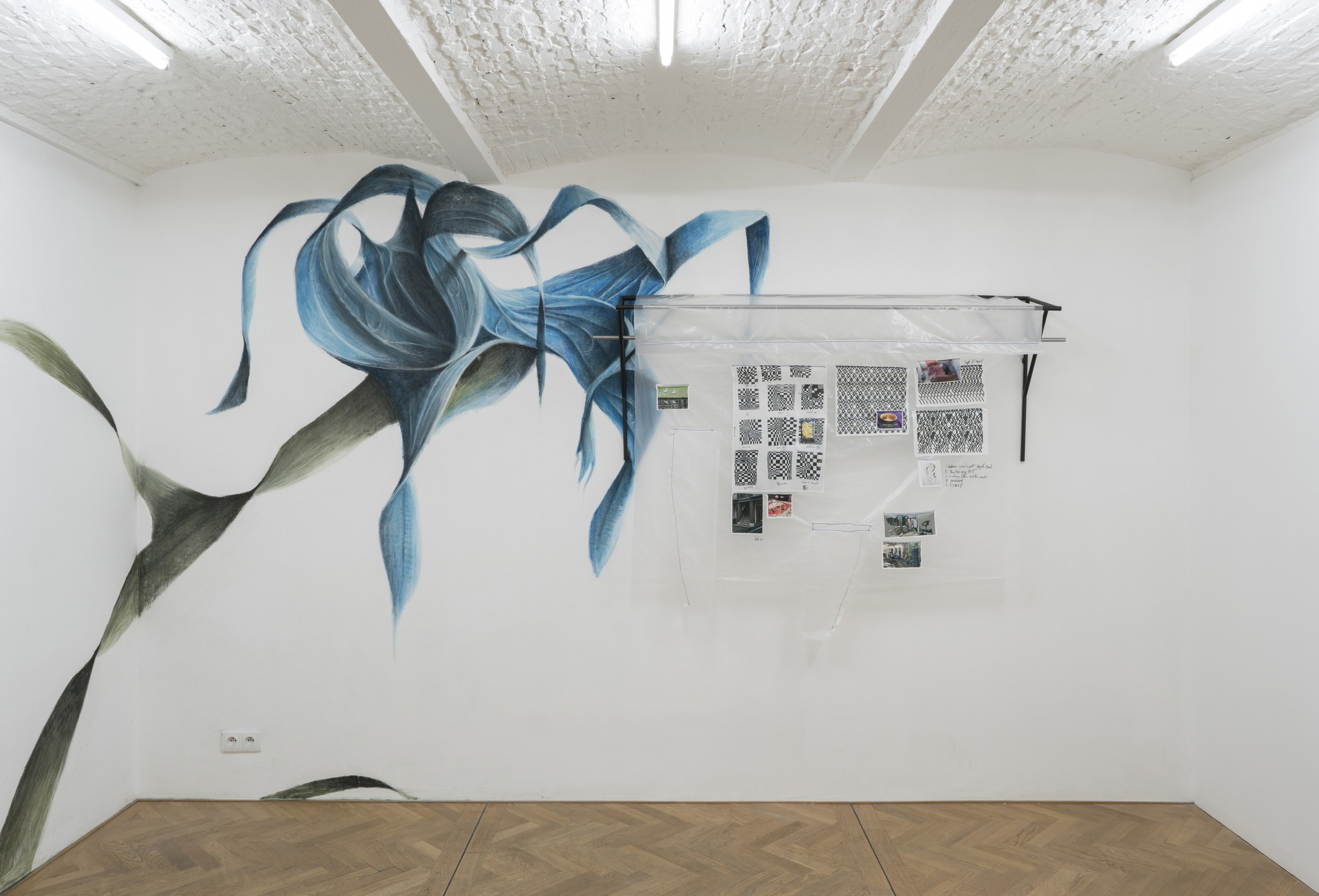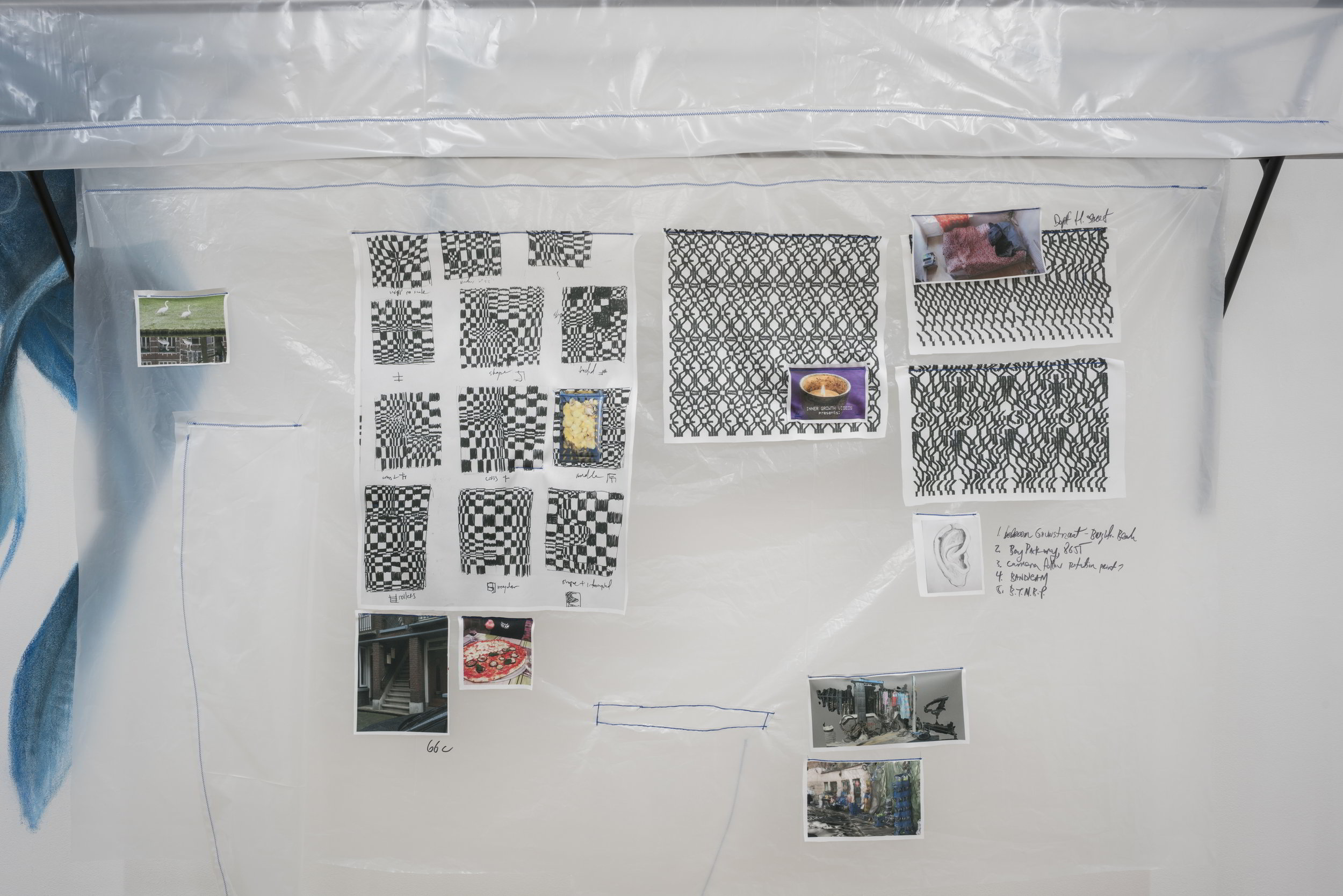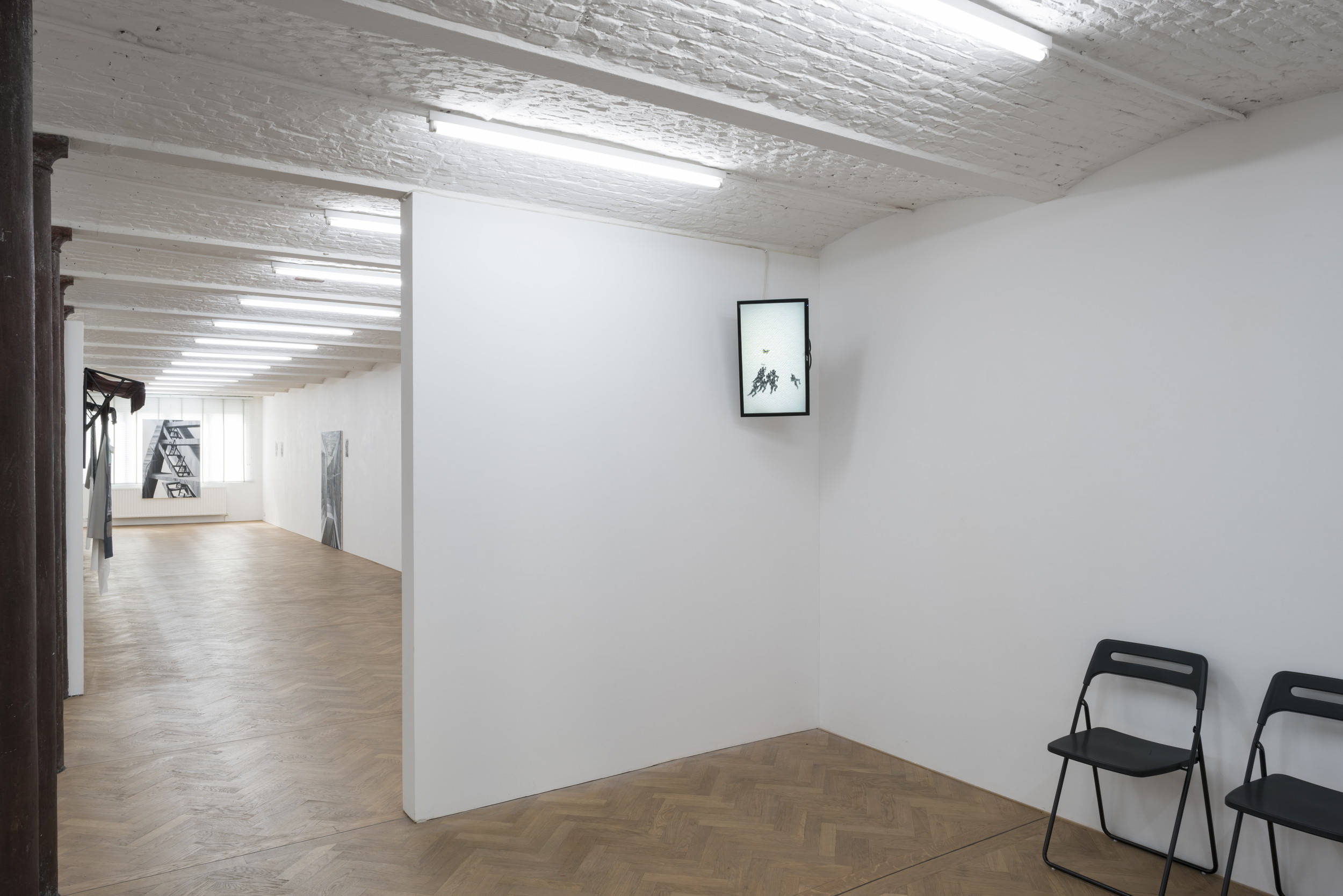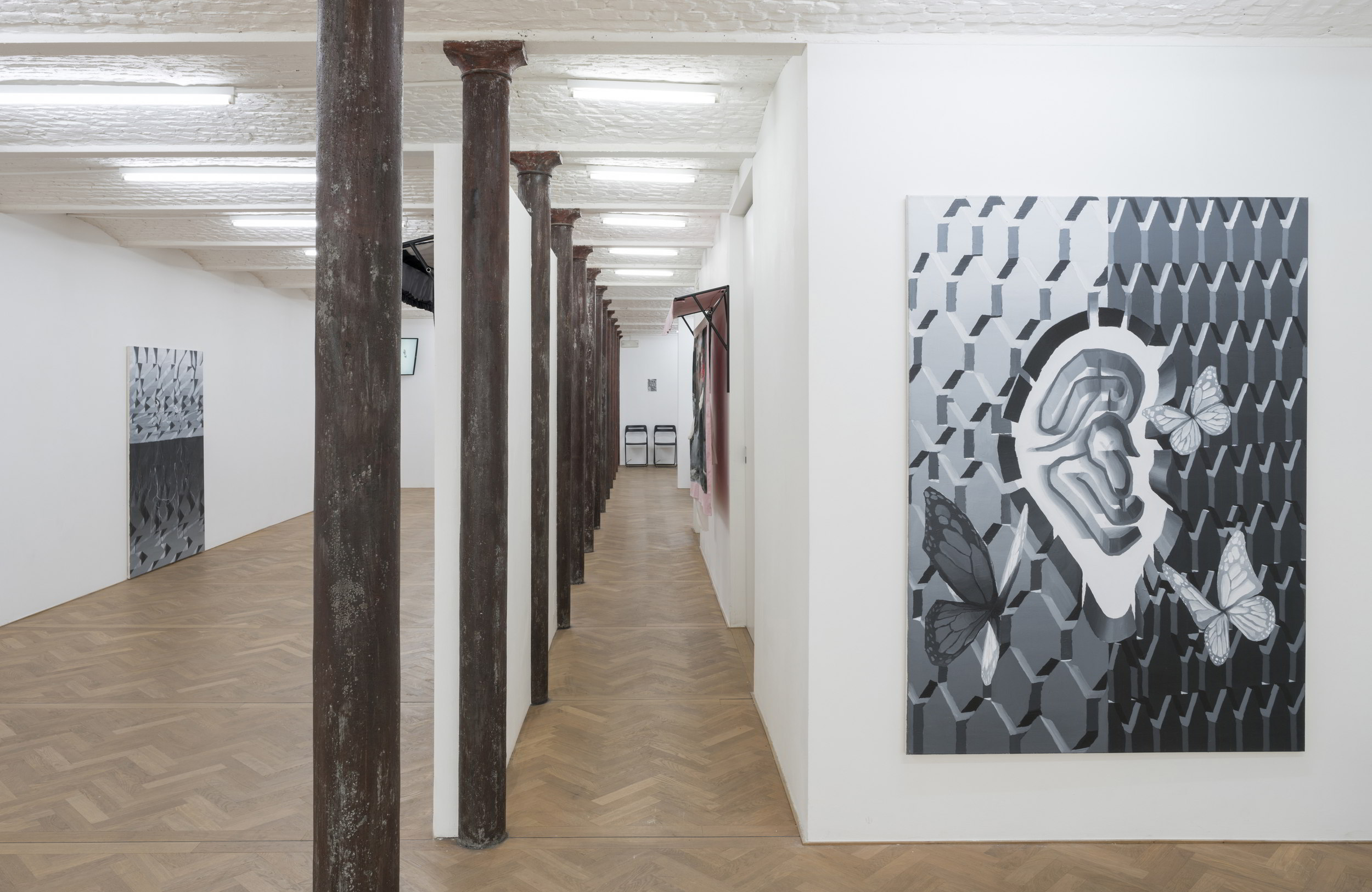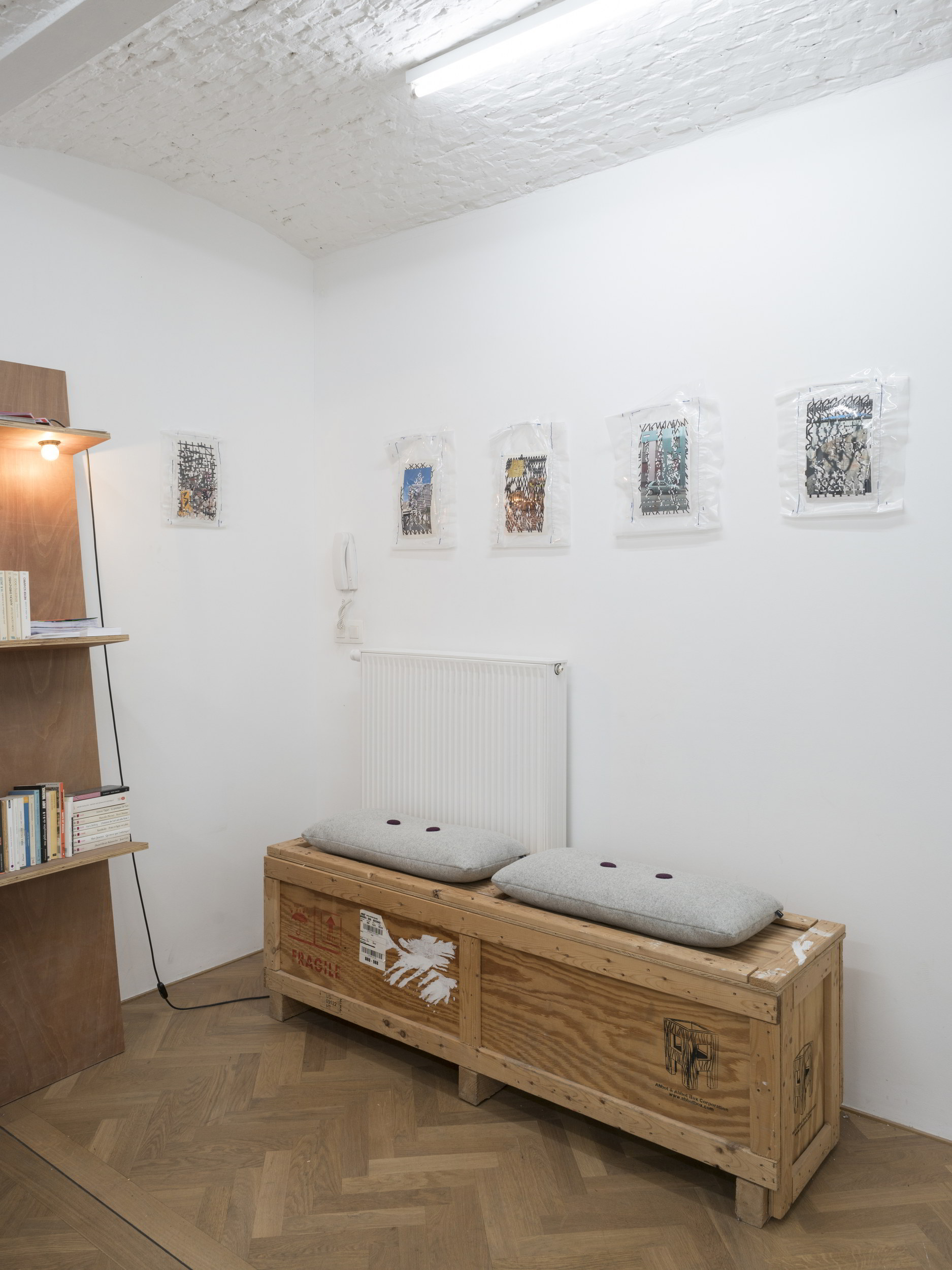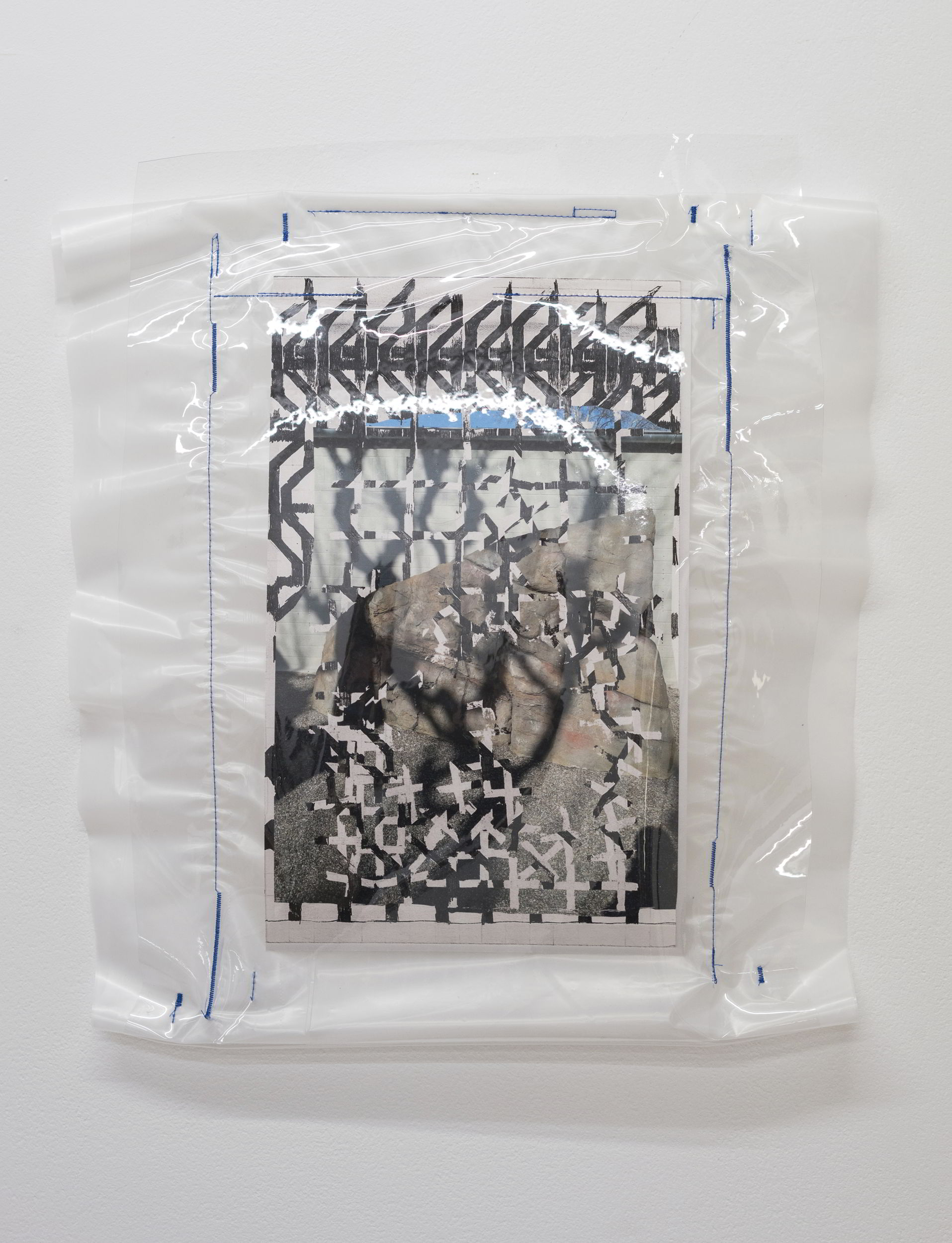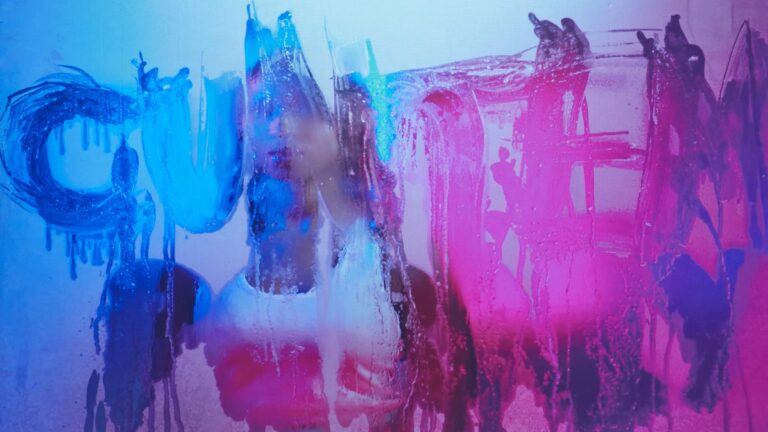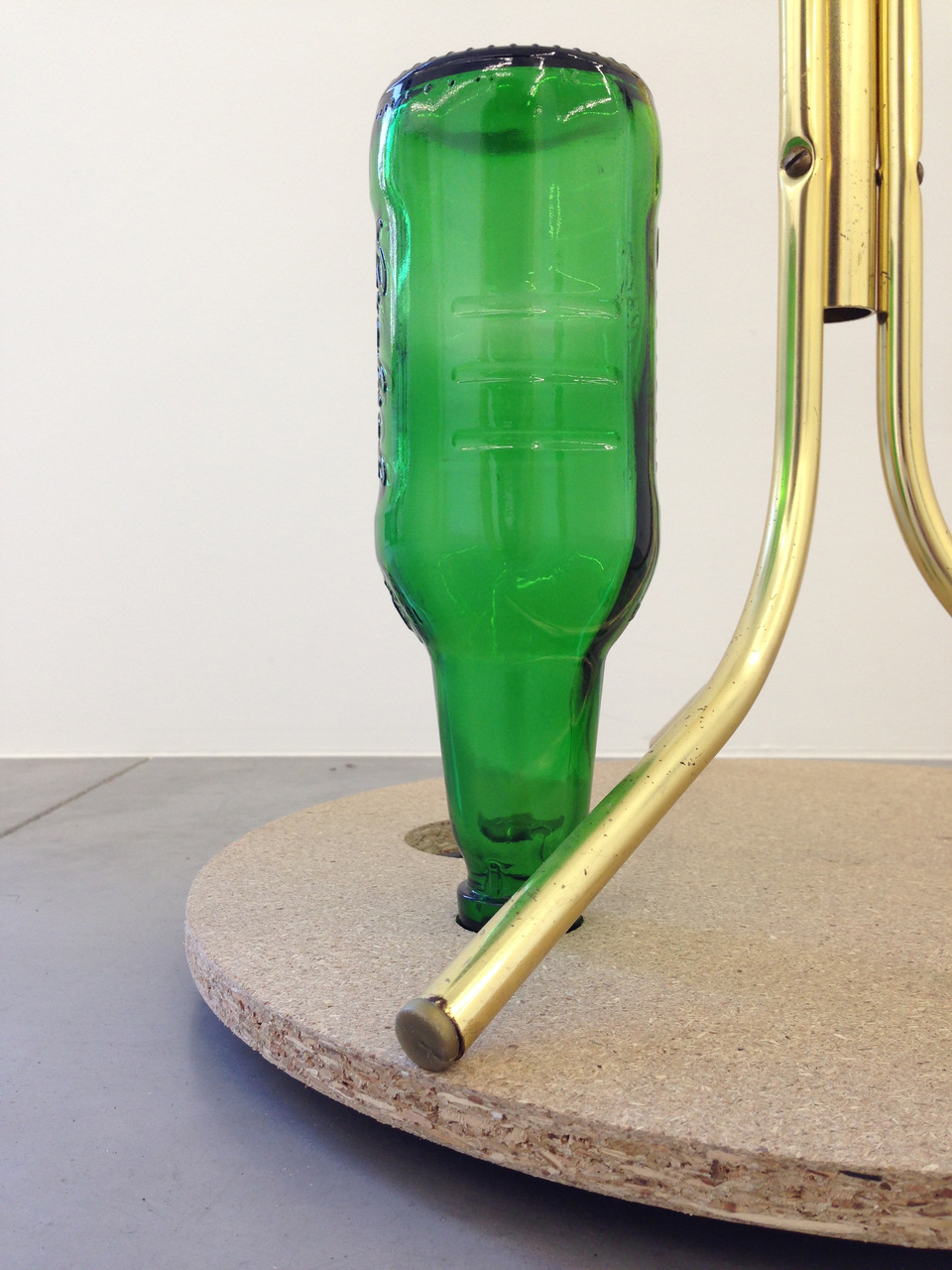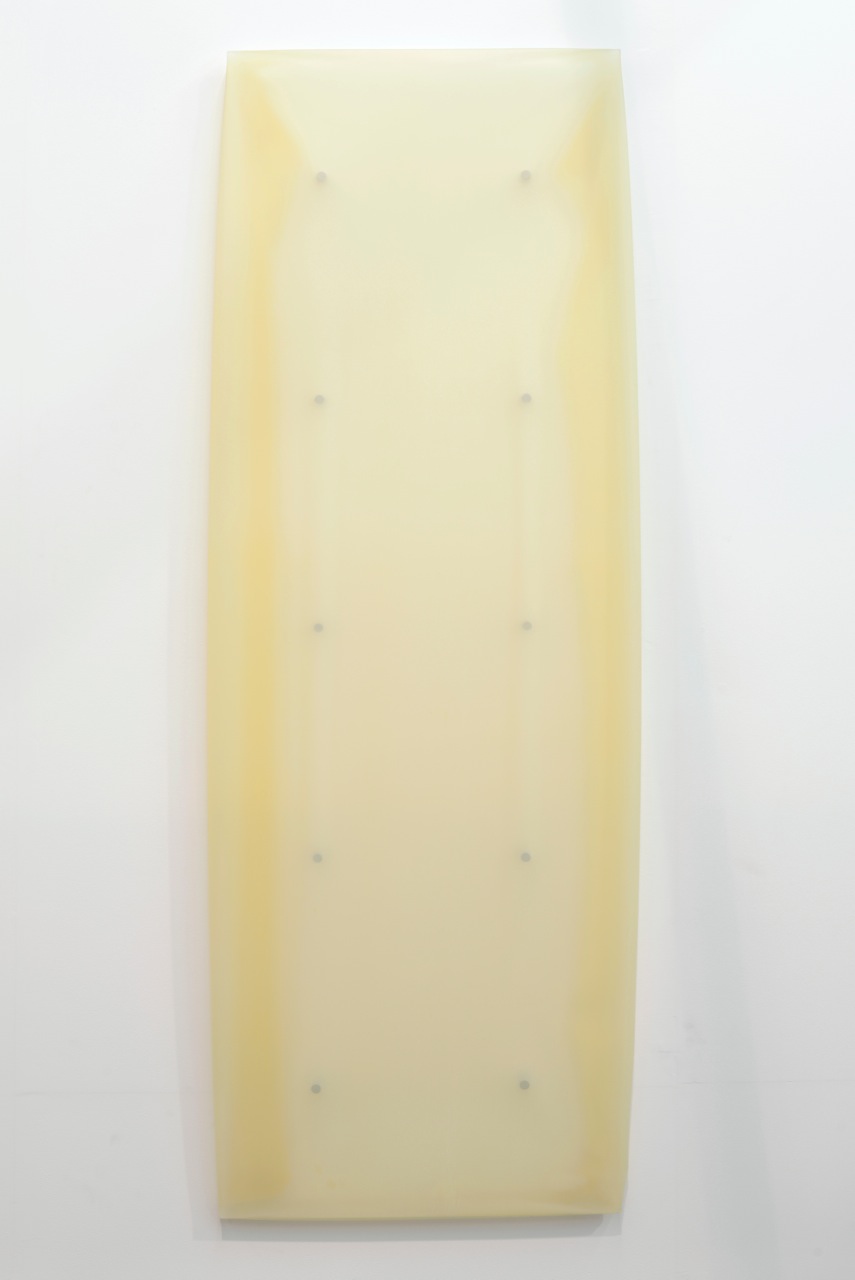Artists: Martin Kohout and Viktor Timofeev
Exhibition title: Victorian Basics and Martian Stories
Venue: LEVY.DELVAL, Brussels, Belgium
Date: March 23 – April 28, 2017
Photography: all images copyright and courtesy of the artist and LEVY.DELVAL, Brussels
Of the many categories that art vernacular is full of, «fiction» isn’t the most common. Many of these concepts are often binomial, such as in «abstraction/figuration». Yet it’s more evidence that such simple distinctions aren’t encouraging, nor are fruitful reflections. The opposite of «fiction» would be «documentary» or as prosaic as English language can be, «non-fiction». But what Martin Kohout’s and Viktor Timofeev’s works share most is that they are both. This can also be characterized as spectral, for they are working within the spectrum between these two opposing poles. Their works can be considered to some extent as minute studies of the contemporary imagination. Yet they operate at two different levels: when Timofeev uses the topoi of dreams and nightmares, Kohout seems more ambiguous and put the viewer in an alternate place. The difference between their approaches could be compared to that between paradoxical sleep and deep sleep for instance.
Slides (2017), Martin Kohout’s movie, opens with the smooth transition from sleep to a state of waking. This is followed by the character retreating into an alternate world of ever present screens and online existence. Yet, it’s far from the dystopian world that is created in films such as Lawnmower Man (1992) or the famous Apple commercial (1984). Slides is a subtle blend of an actual and virtual reality. Its tour-de-force is that it is unclear if we are witnessing a Gibsonian sci-fi/anticipation (1) movie or a documentary on Millenials’ angst. When the character played by artist Bora Akincitürk wanders through a deserted Deptford High street at night, it becomes clear that the closed shops inhabit more reality online than irl. Indeed, since they are constantly evolving and adapting to the supply/demand, they don’t bother to taking the time to change the actual shop signs; one must check online what it is that they are actually selling. It remains unclear if this factual, but it’s a reality that is highly probable. This sequence thus creates a highly probable -yet possibly fictional- blend of (augmented) realities: we’re transposed beyond a simple dichotomy that could be described by the aforementioned terms of fiction/non-fiction. Another remarkable moment happens when a character recalls a child’s memory related to a phone app: it’s really on the verge of being possible; considering the age of the character however, there’s a cloud of doubt. Is it pointing towards a rare occurrence or foreseeing a near future when this is commonplace.
Kohout’s musings correspond the distressed escapes of Timofeev’s faceless humanoids. Some hints of light appear in his claustrophobic world in the shape of simple touches such as butterflies and sprouts. Yet, as his video diptych suggests, an image can become its opposite in the blink of an eye. A dream can become a nightmare and vice-versa, to the point where it’s unclear which is which: a crowd chasing a butterfly or a swarm chasing a human. The pace here isn’t the one of a wandering person anymore. To continue the metaphor, we’re clearly now in another phase of the sleep cycle. Timofeev’s geometry is also quite different than Kohout’s. In Slides as well as in Kohout’s printed fabric pieces, the geometry appears at times slightly altered. In Timofeev’s paintings and drawings on the other hand, the architectural makeup is aggressively non-Euclidean.
Although different, both bodies of work are alternative phases of a continuity. That’s why they can easily coexist in the same space. They are in constant movement in the observer’s mind, because of their uncanny nature. For instance, Timofeev creates images that can be perceived as «virtual», thereby potentially futuristic. Strange as it may sound, the images manage to conjure up a relationship to computer graphics, even while they might reference an archaic “low poly” aesthetic, or use an even more archaic technique such as painting. This timeline is blurred, similarly to Martin’s work. It leads us to the conclusion that it is difficult to be synchronous with our present; we’re always a bit ahead or behind.
If each respective work is a deconstruction of oversimplified alternatives, then a duo show couldn’t be a simple arithmetic addition of two bodies of works: their juxtaposition and co-existence creates new layers of meaning and dialogue. The two artists go even further when they decide to merge their own languages and collaborate on a series of collages and fabrics. Deleuze and Guattari’s famous take on non-subjective/multi-faceted collaboration could be quoted here, but the joke of the shapeshifting Zelig(2) would sum it up perfectly: “I’m treating two sets of Siamese twins with split personalities. I’m getting paid by eight people.”
1) William Gibson, Pattern Recognition (2003)
2) Woody Allen. Zelig (1983)
Viktor Timofeev, Godflower III (for C.S.), 2018, pastel wall drawing
Viktor Timofeev, Godflower III (for C.S.), 2018, pastel wall drawing
Martin Kohout & Viktor Timofeev, VBMS 1, 2018, inkjet print on fabric, plastic, metal, marker. 147 x 188 x 40 cm
Martin Kohout & Viktor Timofeev, VBMS 1, 2018, inkjet print on fabric, plastic, metal, marker. 147 x 188 x 40 cm
Martin Kohout & Viktor Timofeev, VBMS 1, 2018, inkjet print on fabric, plastic, metal, marker. 147 x 188 x 40 cm
Martin Kohout and Viktor Timofeev, Victorian Basics and Martian Stories, 2018, exhibition view, LEVY.DELVAL, Brussels
Martin Kohout and Viktor Timofeev, Victorian Basics and Martian Stories, 2018, exhibition view, LEVY.DELVAL, Brussels
Martin Kohout and Viktor Timofeev, Victorian Basics and Martian Stories, 2018, exhibition view, LEVY.DELVAL, Brussels
Viktor Timofeev, November 23 (Polymer 1), 2018, ink, pencil on paper, 25 x 18cm
Martin Kohout and Viktor Timofeev, Victorian Basics and Martian Stories, 2018, exhibition view, LEVY.DELVAL, Brussels
Martin Kohout and Viktor Timofeev, Victorian Basics and Martian Stories, 2018, exhibition view, LEVY.DELVAL, Brussels
Viktor Timofeev, Twodom, 2018, two-channel generative video, duration variable
Viktor Timofeev, Twodom, 2018, two-channel generative video, duration variable
Viktor Timofeev, Twodom, 2018, two-channel generative video, duration variable
Viktor Timofeev, Twodom, 2018, two-channel generative video, duration variable
Martin Kohout and Viktor Timofeev, Victorian Basics and Martian Stories, 2018, exhibition view, LEVY.DELVAL, Brussels
Martin Kohout and Viktor Timofeev, Victorian Basics and Martian Stories, 2018, exhibition view, LEVY.DELVAL, Brussels
Martin Kohout, Dongsi Hutong Storage Sleeves, 2018, inkjet print on polyester satin, fabric, metal, 158 x 212 x 40 cm
Martin Kohout, Dongsi Hutong Storage Sleeves, 2018, inkjet print on polyester satin, fabric, metal, 158 x 212 x 40 cm
Martin Kohout, Dongsi Hutong Storage Sleeves, 2018, inkjet print on polyester satin, fabric, metal, 158 x 212 x 40 cm
Viktor Timofeev, Cyclical Oubliette 1, 2018, acrylic on canvas, 180 x 130 cm
Viktor Timofeev, Cyclical Oubliette 1, 2018, acrylic on canvas, 180 x 130 cm
Viktor Timofeev, Cyclical Oubliette 1, 2018, acrylic on canvas, 180 x 130 cm
Martin Kohout, Beijing Mall Sleeves, 2018, inkjet print on polyester satin, fabric, metal, 173 x 195 x 40 cm
Martin Kohout, Beijing Mall Sleeves, 2018, inkjet print on polyester satin, fabric, metal, 173 x 195 x 40 cm
Martin Kohout, Beijing Mall Sleeves, 2018, inkjet print on polyester satin, fabric, metal, 173 x 195 x 40 cm
Martin Kohout and Viktor Timofeev, Victorian Basics and Martian Stories, 2018, exhibition view, LEVY.DELVAL, Brussels
Viktor Timofeev, Stairway to Melon 2, 2018, acrylic on canvas, 180 x 130 cm
Viktor Timofeev, Stairway to Melon 2, 2018, acrylic on canvas, 180 x 130 cm
Viktor Timofeev, December 10 (Polymer 2), 2018, ink, pencil on paper, 28 x 18 cm
Martin Kohout, Dongsi Night Shop Sleeves, inkjet print on polyester satin, fabric, metal, 187 x 187 x 40 cm
Martin Kohout, Dongsi Night Shop Sleeves, inkjet print on polyester satin, fabric, metal, 187 x 187 x 40 cm
Martin Kohout, Dongsi Night Shop Sleeves, inkjet print on polyester satin, fabric, metal, 187 x 187 x 40 cm
Martin Kohout and Viktor Timofeev, Victorian Basics and Martian Stories, 2018, exhibition view, LEVY.DELVAL, Brussels
Viktor Timofeev, January 17 (Polymer 3), 2018, ink, pencil on paper, 30 x 22.5 cm
Viktor Timofeev, March 3 (Polymer 4), 2018, ink, pencil on paper, 35 x 23 cm
Viktor Timofeev, Hollow Vessel, 2018, acrylic on canvas, 160 x 105 cm
Viktor Timofeev, Hollow Vessel, 2018, acrylic on canvas, 160 x 105 cm
Martin Kohout, Slides, 2017, full HD video, 22mn30
Martin Kohout, Slides, 2017, full HD video, 22mn30 (Trailer)
Martin Kohout and Viktor Timofeev, Victorian Basics and Martian Stories, 2018, exhibition view, LEVY.DELVAL, Brussels
Viktor Timofeev, Stairway to Melon 3, 2017, acrylic on canvas, 180 x 130 cm
Martin Kohout and Viktor Timofeev, Victorian Basics and Martian Stories, 2018, exhibition view, LEVY.DELVAL, Brussels
Martin Kohout & Viktor Timofeev, VBMS 2, inkjet print on archival paper, plastic, thread, 42 x 32 cm
Martin Kohout & Viktor Timofeev, VBMS 3, inkjet print on archival paper, plastic, thread, 42 x 32 cm
Martin Kohout & Viktor Timofeev, VBMS 4, inkjet print on archival paper, plastic, thread, 42 x 32 cm
Martin Kohout & Viktor Timofeev, VBMS 5, inkjet print on archival paper, plastic, thread, 42 x 32 cm
Martin Kohout & Viktor Timofeev, VBMS 6, inkjet print on archival paper, plastic, thread, 42 x 32 cm


